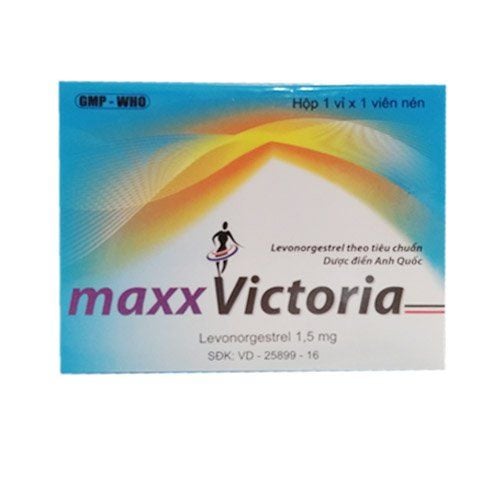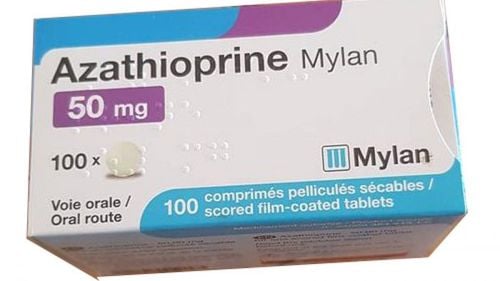This is an automatically translated article.
Aminoplasmal drug is used for parenteral nutrition in the cases of prevention and treatment of protein deficiency in patients with burns, cancer, hemorrhage, postoperative, poor nutrition, protein absorption disorders due to gastrointestinal tract. chemical,... So what is the use of Aminoplasmal?
1. Uses of Aminoplasmal drugs
What is Aminoplasmal? Aminoplasmal drugs belong to the group of drugs that regulate water, electrolytes and acid-base balance. Aminoplasmal 5 is indicated in the following cases:
Parenteral nutrition, providing amino acids as a substrate for intravenous protein synthesis when oral and enteral nutrition cannot be performed. can now. Prophylaxis and treatment of protein deficiency in patients with hemorrhage, burns, postoperative, cancer, poor nutrition and gastrointestinal diseases or disorders of protein absorption due to gastrointestinal tract. Patients with cystic fibrosis, short bowel syndrome, Crohn's disease,... Parenteral nutrition in premature infants and infants. Besides the above uses, Aminoplasmal medicine may also be used to treat some other conditions that are not listed above. Therefore, before taking the drug, consult your doctor for advice and effective use of the drug.
Aminoplasmal 5 is contraindicated for use in the following cases:
Hypersensitivity to amino acids present in solution Congenital abnormal amino acid metabolism Serious circulatory disorders threatening blood vessels such as shock Hypoxemia Metabolic acidosis Severe progressive liver disease Severe renal failure not requiring dialysis or hemodialysis High serum electrolyte levels Children under 2 years of age Decompensated heart failure Acute pulmonary edema Fluid retention
2. Usage and dosage of Aminoplasmal drug
Aminoplasmal 5 is prepared as a solution for injection, so it is given intravenously. Dosage of Aminoplasmal drug will depend on the condition and age of the patient such as:
For adults and adolescents aged 15 years and older: Use at a dosage of 40ml/kg/day at a rate infusion 2ml/kg/hour The average daily dose is 20-40ml/kg, corresponding to 1-2gram amino acids/kg. The maximum daily dose is 40ml/kg corresponding to 2 grams of amino acids/kg The maximum infusion rate and drop is 2ml/kg/hour equivalent to 45 drops/minute for a patient weighing 70kg. For children and adolescents 14 years of age, the recommended dosage is based on a guide mean, the dose should be adjusted accordingly to the age of the patient and stage of disease development and condition. disability. The daily dose for children from 3-5 years old is 30ml/kg/day, equivalent to 1.5 grams of amino acids/kg/day. The daily dose for children from 6-14 years old is 20ml/kg/day corresponding to 1gram amino acid/kg/day. The maximum droplet infusion rate is 2ml/kg/hour corresponding to 0.1 gram amino acid/kg/hour. For cases requiring 1gram/kg/day or more, special attention should be paid to the limit of fluid intake in order to avoid fluid overload, and amino acid solutions can be used with a larger concentration in case of dehydration. this case.
3. Undesirable effects when using Aminoplasmal drugs
Some unwanted effects that may occur when using Aminoplasmal infusion include:
Nausea or vomiting Chest pain Palpitations Head Vascular pain
4. Some notes when using Aminoplasmal drugs
Some notes when using Aminoplasmal infusion include:
Inform your doctor about any history of allergy to Aminoplasmal or any other allergies. Aminoplasmal may contain inactive ingredients and may cause allergic reactions or other serious problems. Report any medications you are taking including prescription and nonprescription drugs, herbs and supplements, foods, dyes or preservatives. Aminoplasmal infusion should be used with caution in patients with disorders of amino acid metabolism of various etiologies, patients with increased serum osmolality. During treatment, it is necessary to monitor electrolytes, blood glucose levels, fluid balance, acid-base balance, and kidney function regularly. Serum protein control and liver function tests For patients with heart failure caution should be exercised when large volumes of fluid are infused Check for signs of inflammation or infection at the infusion site. For hypotonic dehydration, it should be corrected by providing adequate fluids and electrolytes before administering parenteral nutrition solutions. Aminoplasmal can be used as part of total parenteral nutrition when combining appropriate amounts of energy supplements such as (carbohydrate solutions, fatty emulsions), vitamins, trace elements. If used in combination with other nutrient solutions, the potential for peripheral intravenous infusion depends on the osmotic concentration of the mixed solution. In addition, do not use if the solution is not clear or if the bottle or cap shows signs of damage. A sterile infusion set must be used, each bottle is for single use only, the unused portion must be discarded and must not be saved for future use If additional nutrients such as carbohydrates (carbs), lipids are required , vitamins and trace elements into this drug to provide total parenteral nutrition, the mixing process must be carried out under strict aseptic conditions. The mixing should be completely mixed and the compatibility of the additives should be checked.
Please dial HOTLINE for more information or register for an appointment HERE. Download MyVinmec app to make appointments faster and to manage your bookings easily.













